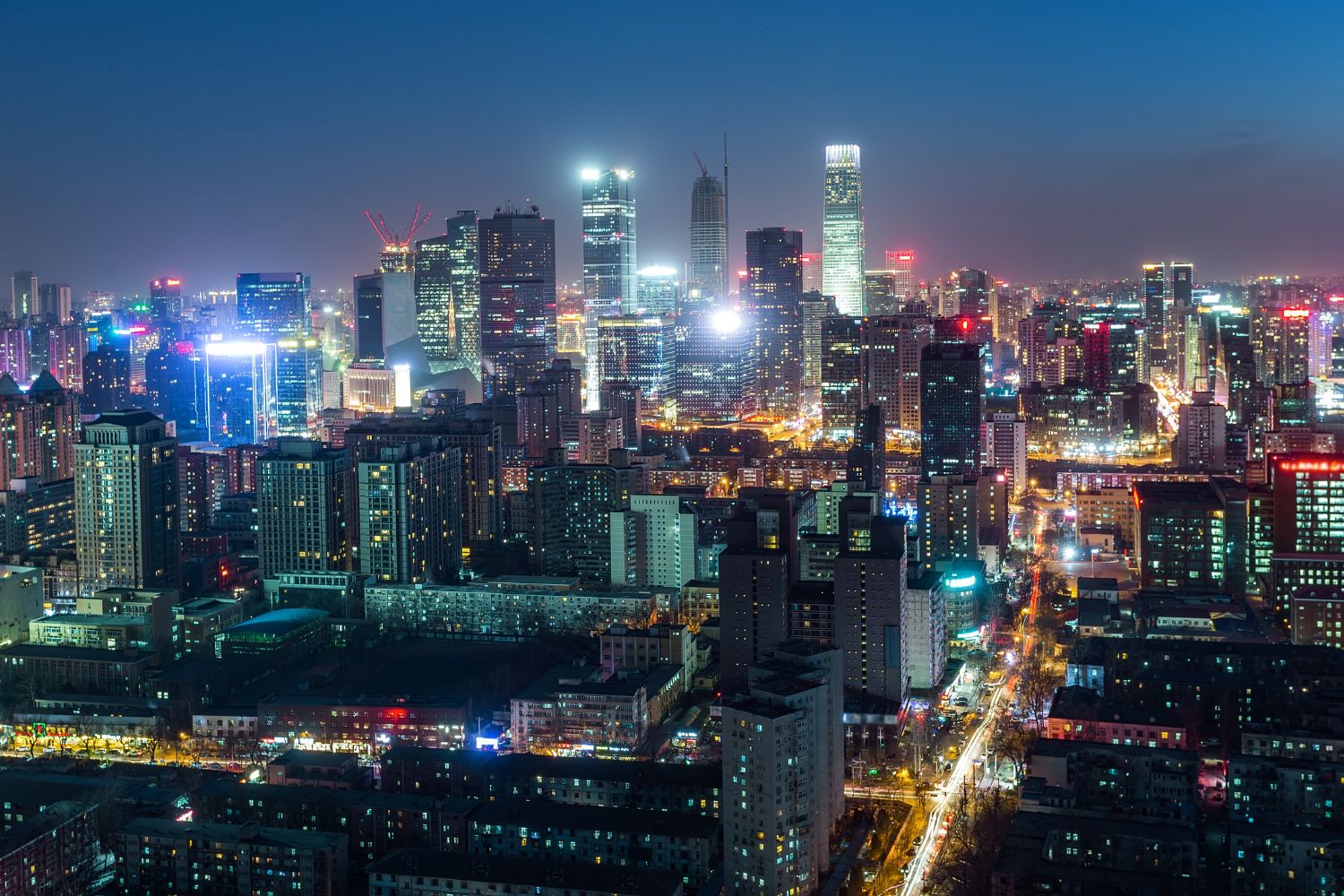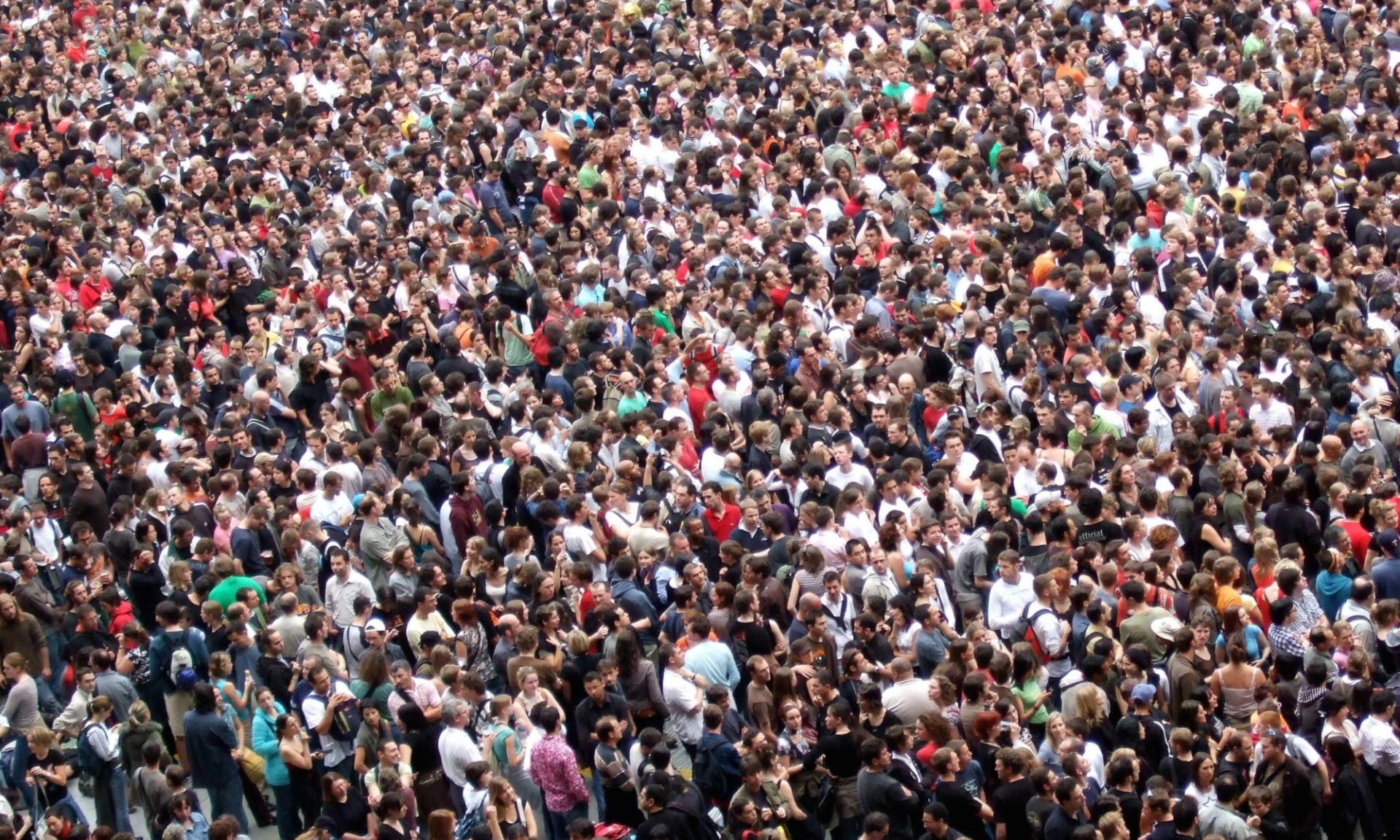We became a world of 8 billion in 2021 (see note at bottom of page). After passing the 7 billion milestone in 2009, it only took 12 years to add the latest billion.
When Did the World Population Reach 1 Billion?
Until the Industrial Revolution began, birth rates and death rates were both very high, which kept the global human population relatively stable. In fact, it took all of human history, until around 1804, to reach 1 billion people. Modern medicine and sanitation played heavily in reducing mortality rates—especially among infants and children—but there wasn’t yet a reliable way to reduce fertility (the first modern contraceptive, the birth control pill, wasn’t introduced until 1960). The drop in mortality while fertility remained unchanged caused the beginning of what is now known as the J-curve (Figure 2). With more people surviving to adulthood and then having kids of their own, the human population started growing exponentially.
When Did the World Population Reach Other Milestones?
It took 123 years to reach 2 billion, and only 32 years to reach 3 billion. The last several billion milestones (4, 5, 6, 7, and 8 billion) were reached in 15, 12, 11, 12, and 12 years, respectively. The UN projects that it will take 15 years to become a population of 9 billion.
Figure 1
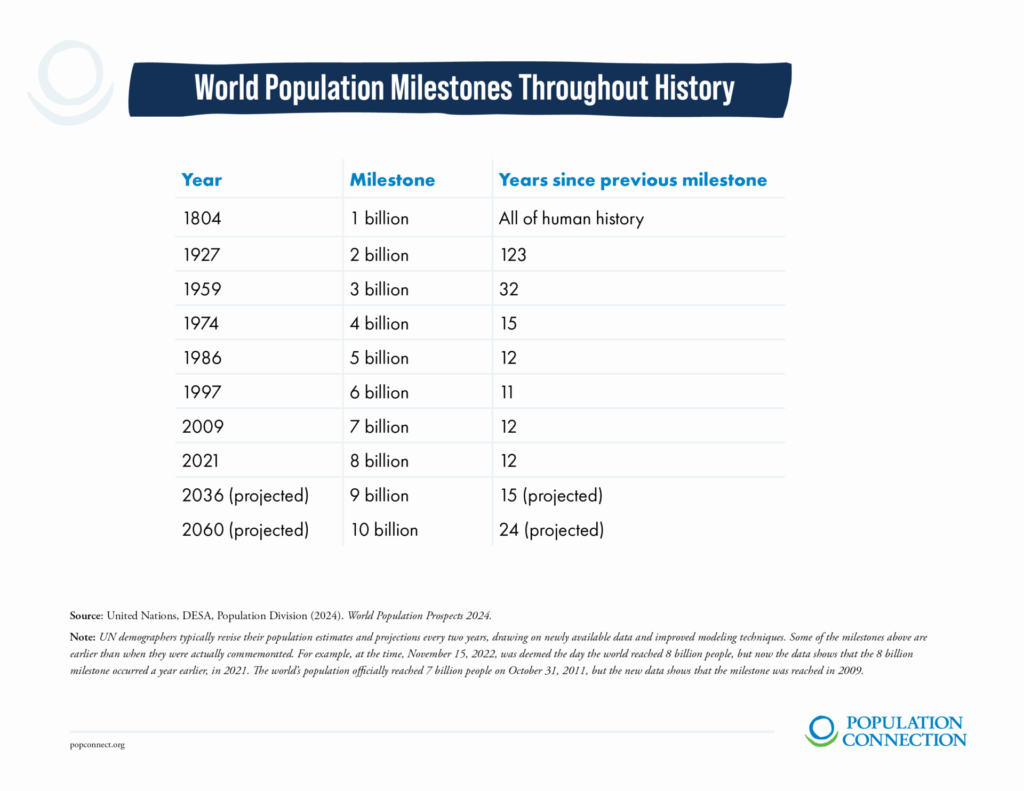
Most of the growth around the world occurs in less developed countries—places already struggling to provide for their citizens, especially in the midst of the climate crisis (which has been disproportionately caused by people in high-income countries). In fact, 96% of global population growth since the 7 billion milestone has occurred in less and “least” developed countries, as will 100% of growth between now and 2050.
World Population Growth Graph
The growth of the human population over time can be depicted by what is known as the population J-curve, which shows how sharply our population has risen in the last 200+ years.
Figure 2
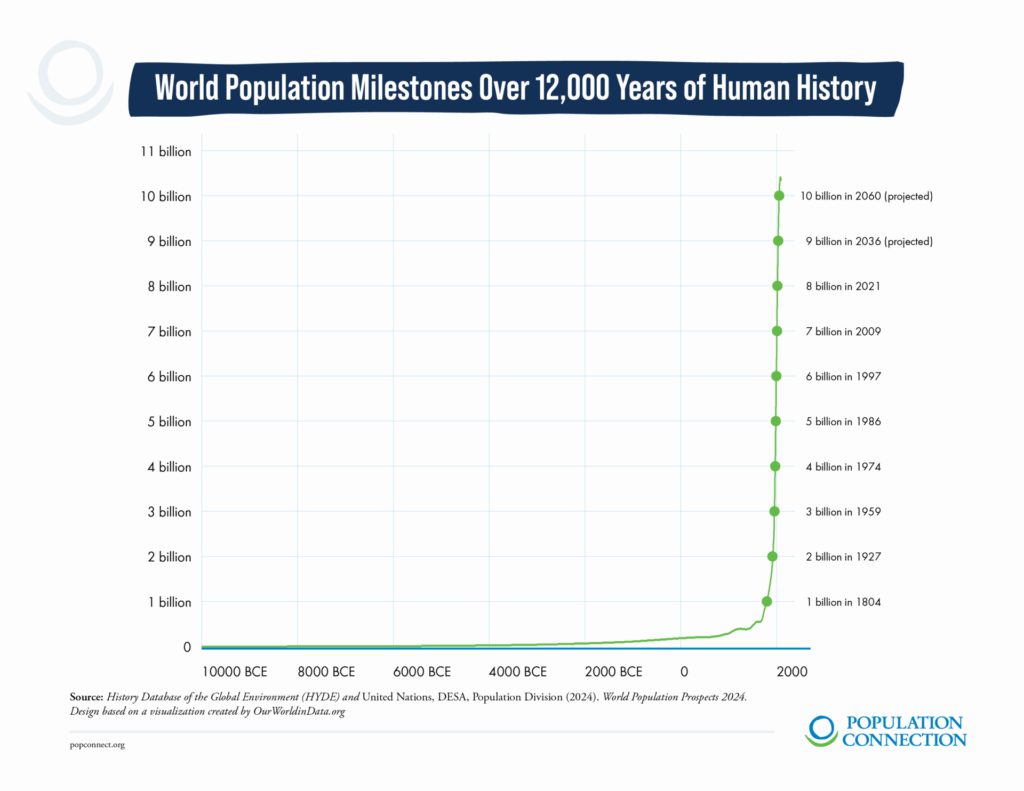
The steep ascent over the past two centuries has created growing pains for families, communities, countries, and the planet. Consumption levels vary by individual and by world region, but everyone has infrastructure needs and contributes to environmental degradation to some degree. The more people who need food, water, shelter, health care, education, and employment, the more our agricultural systems, human institutions, and public infrastructure will need to grow and the more the environment and other species feel the strain.
When Will the Population Reach 9 and 10 Billion?
The United Nations Population Division projects that the world will reach 9 billion people in 2036 and 10 billion in 2060.
When Will We Reach Peak Population?
According to the UN’s most likely projection (the “medium variant”), our population will peak at 10.4 billion in 2086, and will remain at this level for the remainder of the century.
However, without increased investment in voluntary international family planning programs, girls’ education, and other empowering initiatives that correlate with lower fertility, we could be looking at a higher future peak population. Conversely, if we accelerate progress on women’s empowerment, we could achieve a lower population at the end of the century than today’s.
The UN projections show that if every other family had one more child than currently expected (the “high variant”), our global population would soar to 14.4 billion by 2100. If every other family had one fewer child than currently expected (the “low variant”), our global population would peak at 8.9 billion in 2052, and then decline to 7 billion by 2100. Small changes in fertility rates have big impacts on future population size!
Figure 3
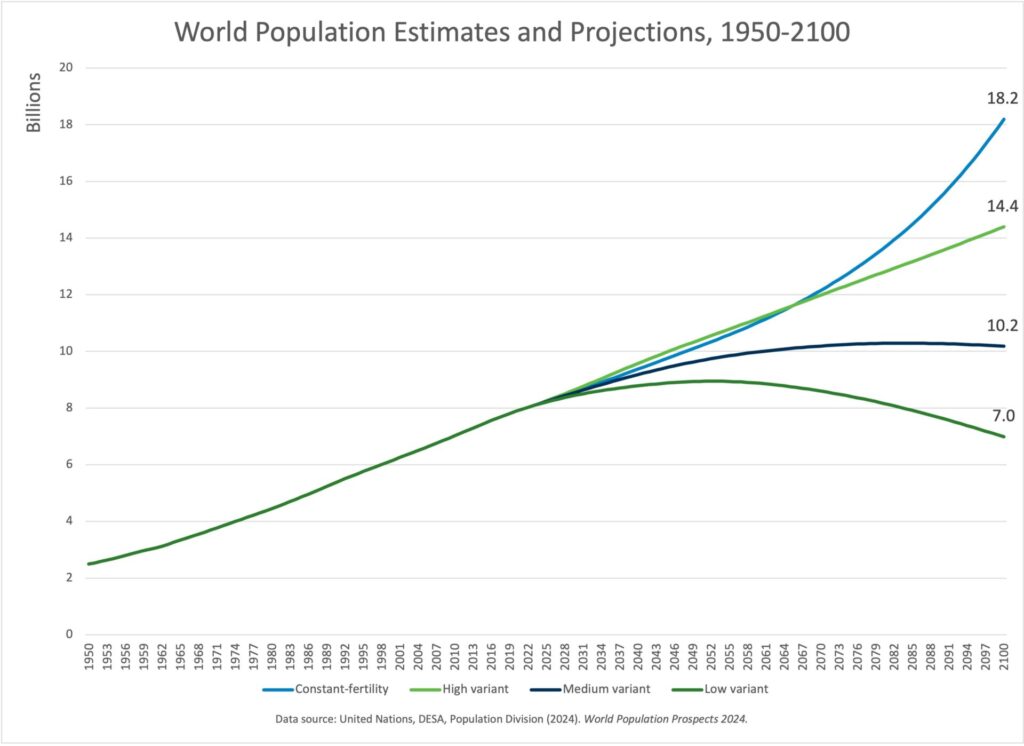
* Demographers at the United Nations Population Division typically revise their population estimates and projections every two years, drawing on newly available data and improved modeling techniques. Some of the milestones above are earlier than when they were actually commemorated. For example, at the time, November 15, 2022, was deemed the day the world reached 8 billion people, but now the data shows that the 8 billion milestone occurred a year earlier, in 2021.

